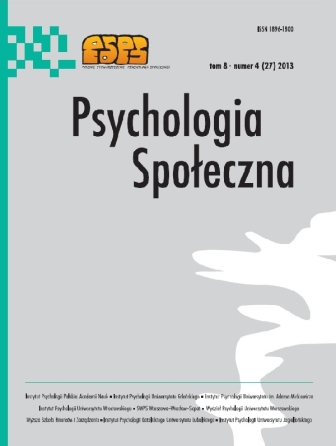Poczucie zagrozenia pracownikow organizacji humanitarnych w Afganistanie
Feeling of threat among of humanitarian aid organization workers in Afghanistan
Author(s): Joanna Kasprowicz, Ryszard MakarowskiSubject(s): Psychology
Published by: Wydawnictwo Naukowe Scholar Sp. z o.o.
Keywords: humanitarian organizations, humanitarian aid organization, stress, risk
Summary/Abstract: The study sought to investigate psychological characteristics of people working for humanitarian organizations in Afghanistan (who are not Afgans). The research was based on Strelau’s Regulative Theory of Temperament. Level of the experienced threat was measured with four questionnaire items while experienced stress and stimulation-associated risk were indices of the level of stimulation. The study included 110 people (65 women and 45 men). Significant differences between women and men occurred with respect to the level of emotional tension, intrapsychic stress, external stress and stimulation risk. Women were characterized by a higher level of stress whereas males reported a lower level of stimulation risk. There were found significant differences between the studied humanitarian workers in Kabul and the English speaking medical students from the USA, Canada and Europe. Level of stimulation risk did not differentiate these two groups. Level of stress was considerably lower among people working in Afghanistan than among the examined students. By means of confirmatory analysis we tested three models of relations between variables, differing in type of stress. Correlations in those models revealed that the higher the level of internal (intrapsychic) stress, the higher the level of stimulation risk and the higher the level of external stress, the lower the level of stimulation risk. We conclude that for people working in Afghanistan stress is perceived as a challenge with which they have to cope, therefore the higher the number of external challenges, the more people’s adaptation is directed towards lowering of the level of stimulation. In contrast, the intrapsychic stress increased the level of stimulation risk which means that anticipation of threat tends to increase stimulation and thereby the stimulation risk.
Journal: Psychologia Społeczna
- Issue Year: VIII/2013
- Issue No: 27
- Page Range: 380-395
- Page Count: 16
- Language: Polish

